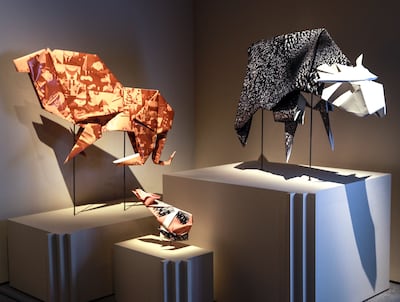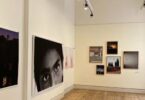Saeed Saeed
Museums should strive to be in touch with the public, says Louvre Abu Dhabi director Manuel Rabate.
Speaking to The National at the Abu Dhabi International Book Fair on Saturday, he says cultural organisations need to continue refining and expanding their programmes to appeal to both seasoned art lovers and new generation of hi-tech consumers.
However, it is not as straightforward as it looks, with some organisations torn between notions of legacy and the need for innovation.
“It is a debate that is very strong in museums circles in the western world,” Rabate says. “Let’s look at France, a model I am very familiar with, where one-third of the population are museum-goers. These organisations are working very hard to bridge the rest of the gap and establish the museums as a place of cultural authority.”

Louvre Abu Dhabi doesn’t have that quandary, he says, pointing to an “innovative model” of practice, where a commitment to a variety of experiences is at the heart of its operations.
“Within our DNA is this notion of diversity and exchange of culture in all forms and multidisciplinary techniques,” he says. “We started with the idea of reinventing the notion of a universal museum – an encyclopaedic model of collecting knowledge and artworks from around the world – and recontextualising in the way it was represented in the museum itself or other spaces.”

As part of its approach, Louvre Abu Dhabi has been hosting some forward-thinking initiatives. This includes on-site performances by DJs David Guetta and Peggy Gou that featured visuals and artworks inspired by the museum’s collection to building a colourful pavilion at the book fair inspired by its ongoing museum exhibition From Kalila wa Dimna to La Fontaine: Travelling through Fables.
Rabate prefers to think of the museum’s innovative approach not as simply working from a blank canvas, but as “freedom with a purpose”.
“It’s about having the agility to make substantial changes and not forgetting what the primary vision is,” he says.
“And this is really what makes Abu Dhabi also such a successful destination. As well as that agility, you also require commitment and humility because when you are talking about cultural exchange, you need to work together with others to find great ways to tell stories of who we are.”

Despite the historical significance of museums, Rabate acknowledges their need to adapt to technological advances. He says the industry is still grappling with how to deal with artificial intelligence.
“We know that technology is going to change the social practice of museums, so we are still trying to see what the impact will be and how we can prepare for it,” he says. “Personally, I believe tech can help museums find ways to create better experiences for visitors.”
Rabate points to how AI can also help curators and researchers gain a deeper understanding of objects in less time.
“The technology can do some of the heavy lifting of combining the full database of references” he says. “In many ways, this is happening today in some capacity in that technology is helping curators. Our teams at Louvre Abu Dhabi use software that helps us model the exhibition before they are created. It can be a fantastic tool.”
Despite that, Rabate says technology ultimately cannot replace the role of a curator because of its existential repercussions.
“I fundamentally believe in the value of human curation and that it cannot be done by some randomly generated algorithm,” he says. “When AI is able to curate an art show, it begs the question then of what does it mean to be human? That’s because the curation itself is proof of humanity.”







